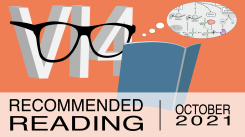Lillian Brady, Ph.D. and Kirsty Erickson are part of the Erin Calipari Lab at Vanderbilt University in the Department of Pharmacology.
Lillian obtained her PhD from the University of Alabama at Birmingham (UAB) in the Department of Neurobiology. While at UAB, Lillian worked with Dr. Lynn Dobrunz where she studied the role of the dopamine system in the modulation and regulation of inhibitory synaptic transmission and neural circuit function within the hippocampus. Lillian joined Vanderbilt University as an Academic Pathways Postdoctoral Research Fellow in May of 2017 where her research interests include understanding the synaptic physiology, circuit function, and molecular mechanisms that underlie different types of learning behavior.
Kirsty graduated from the University of South Dakota in 2016 with a BS in Medical Biology, during which time she studied the role of Ubiquilin-1 in learning and memory. Kirsty came to Vanderbilt in 2017 as a research assistant in the Neul lab, where she investigated the pathogenesis of Rett Syndrome. Now, she joins the Calipari Lab as a graduate student interested in terminal dopamine dynamics that render susceptibility to stimulant use disorder... Click the image on the left to continue reading.









